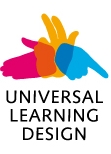Integration of students with hearing impairment in tertiary education and especially in science and medical programs includes two important areas – possibilities of integrating the hearing impaired into the common system of university education and possibilities of integrating them into a vocational training so that they are able to work independently when they graduate.
The language of communication of the majority of hearing impaired students at the Faculty of Science and the Faculty of Medicine at Masaryk University is the Czech sign language, which is a natural tongue for them. Czech sign language is not equipped with scientific sign language terminology for historical reasons. Most specialized signs were initially solved as loans from spoken languages (fingerspelling). The need to expand the Czech sign language vocabulary is growing together with students’ need to understand specialized topics. For this reason, systematization of creation of specialized terminology began. General issues of this systematization, number and composition of teams and the procedures of their work are presented in a lexicographic paper by Tomáš Sklenák and Jan Fikejs, which is why in our paper we focus on the specifics of the work of the science and medical programs group.
A long-term and exceptionally close co-operation of deaf students as sovereign sign language carriers and users with interpreters and expert teaching staff including teachers whose knowledge of the Czech sign language makes it possible to use sign language as the language of instruction in specialized subjects are among the specifics of the MU terminological group for science and medical programs. Knowledge of the structure of the specialized terminology in Czech together with knowledge of the structure of the Czech sign language allows for an insight and a more accurate evaluation of meaning of a specialized sign, while being able to discover possible risks of interference and confusion with other similar signs with a different content.
The process of the Czech sign language terminology creation pays respect to the visuality of sign language and adequacy of content. Signs for specialized terms are either created by a terminologization of an existing sign, by its transfer to an analogous field based on the visual shape, function and properties, or they are completely new signs. An example of a created sign based on a similar shape is the sign for the genus of bacteria Staphylococcus, which appears in a microscope as a bunch of grapes (the sign for a bunch). Sing language users thus proceed in the same way as creators of the Greco-Latin terminology (σταφυλή), albeit independently. Another example of a sign created according to the shape and structure is the sign for the DNA molecule, which has been presented as a double helix ever since the discovery of its structure (a hand movement indicating a double helix, the movement also presents spiralization). Examples of signs derived from the function are the stages of the gene expression – replication, transcription and translation, or signs for the stages of mitosis, whose signs include information about the situation inside a cell during mitotic segregation. An example of a proposal for a new sign is the sign for the term bacteriophage. Despite the fact that a bacteriophage (a virus infecting bacteria) may have various shapes, it has a standard shape in literature illustrations. Unlike with other terms, it is, however not possible to derive the sign from the structure of the organism as such due to the risk of confusion. Nor is it possible to proceed from the definition or function of the organism as the signs for virus and bacteria are very similar in the Czech sign language. An expert with a knowledge of the Czech sign language can operatively show to the terminological group the limitations of the proposed solutions or possible confusions with other signs, and he/she can also add explication in sign language. A specialized term proposed by the terminological group is then maximally visual and respecting sign language grammar, but it is at the same time adequate in content and in harmony with other proposed specialized signs.
Interpreters with a previous knowledge from these fields form an integral part of the terminological group. Interpreters are required to give an accurate translation which preserves the level of expertise (adequacy of content) as well as considering non-standard conditions in laboratories or hospitals, which students of science and medical programs are expected to visit. Some of the theoretical rules that stand as recommendations for interpreters had to be modified according to emerging situations. Examples are the color of clothes (a white cloak in the labs), a higher level of co-operation with a student incapable of carrying out experiments, take notes and look at the interpreter all at once, and a higher level of co-operation with a teacher due to temporal and spatial conditions in the labs. The result is a full and natural integration of hearing impaired students to specialized departments of the University.
An emphasis on the specialized terminology development not only helps to save time, which is important in the specific conditions in the labs, but above all, students have a greater possibility of practical specialized communication. Spontaneous specialized communication in CSL using the created terminology naturally prevents forgetting and the usage reduces the risk of confusions. A close co-operation of expert teachers, interpreters and deaf students has proved to be an indispensable part of adapted tuition in science and medical programs, which aims at respecting the specific requirements for students and at the same time integrating sign language users into departments with a hearing majority.









